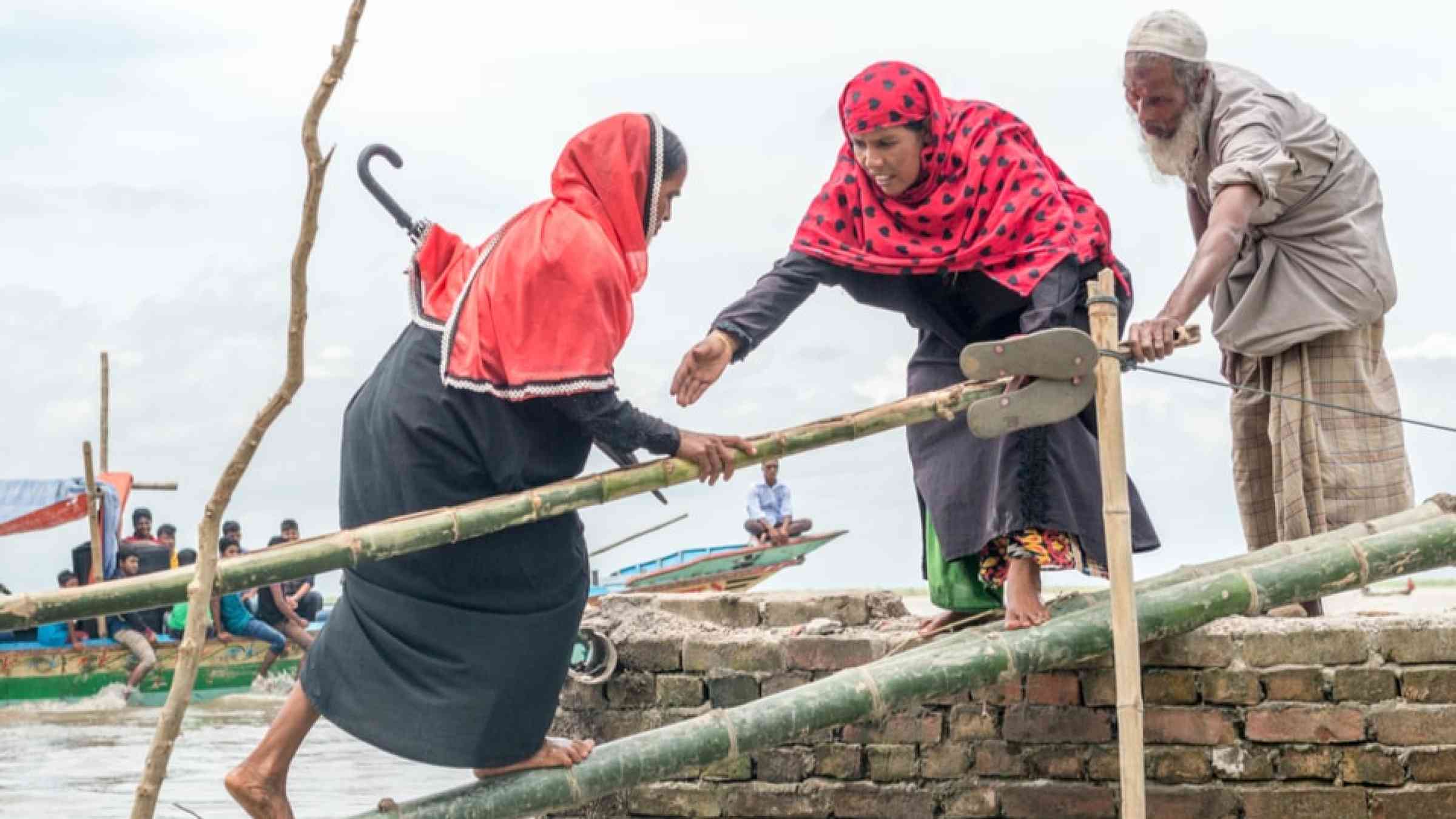Disasters that never happened: Six preventive actions

What if the next big flood, wildfire, or heatwave didn't make headlines? Not because it didn't happen, but because communities, governments and local authorities were so well-prepared that a disaster was avoided? Our research shows this is not just possible – it is already happening around the world.
Disasters avoided research
We see and hear a continual stream of disasters in the headlines (which too often use the misnomer "natural disasters"). Where is the positive news of people who acted before a hazard and prevented a disaster? And cases where the potential hazards were not hazardous to people, places and the planet because the root causes of what could create a potential disaster had been tackled? Such good news stories rarely make the news, yet they hold valuable lessons.
Our "Disasters Avoided" research, initially funded by NASA, uncovers good news stories-examples where disaster risk reduction actions were implemented before it was too late. We've gathered examples from every inhabited continent showing what works in avoiding disasters involving the natural environment, including examples where hazards are present such as droughts, earthquakes, pathogens, landslides, storms, temperature extremes, vegetation fires, and volcanic eruptions.
A six-point model for avoiding disasters
After studying successful cases worldwide, we identified a consistent pattern. As shown in Figure 1, we believe that avoiding disasters requires six essential elements to exist and combine together.
1. The right mindset
Communities, governments and authorities must recognize that disasters aren't "natural"-they result from political and societal choices which lead to vulnerabilities. The first step is acknowledging this reality.
2. The right investment
The right investment at the right time saves lives and livelihoods - and money. Investing in prevention avoids human and financial losses.
3. Good governance
Informed, well-managed, accountable, and enforced requirements by institutions and organisations ensure that investments deliver meaningful benefits.
4. Good data
Good data collection and analysis direct good decision-making and actions. Data should be qualitative and quantitative, ranging from earth observations to people's narratives through lived experiences.
5. Meaningful inclusion
Engaging everyone creates solutions that work "for all, by all, with all."
6. Meaningful targets
Goals must be realistic, inspiring, and achievable. When appropriate, targets can connect with global initiatives such as the Sustainable Development Goals, the Sendai Framework for Disaster Risk Reduction, the Agenda for Humanity, and agendas for climate change, humanitarianism and cities.

Real success stories from around the world
Managing flooding in Bangladesh
In Bangladesh, a country historically vulnerable to devastating floods, pragmatism and inclusivity are saving lives. Villages work directly with NGOs to build dwellings designed to cope with flooding, such as the "plinth villages" with teardrop shapes that work with water flow instead of against it. Earth observation data informs decision-making at national, division, and local levels, while multiple, tested communication channels ensure warnings reach everyone -even in remote areas.
During Cyclone Amphan in 2020, amid COVID-19 challenges, these systems prevented a potential catastrophe when 33,000 people evacuated safely. People acted promptly on evacuation advice because they were meaningfully involved in planning the disaster response themselves. This approach has drastically reduced fatalities compared to devastating cyclones in 1970, 1985, and 1991. Today, Bangladesh is an example of country that is avoiding some flooding disasters.
Wildfire management in Australia
In Australia, wildfire disasters are sometimes avoided because many groups coordinate actions and work towards a common goal. Government agencies at federal, state/territory, and local levels collaborate with communities, businesses and Indigenous peoples to create integrated solutions. This coordinated investment in wildfire risk reduction -including A$200 million annually from federal and state/territory governments- has created a system where prevention is prioritised, and resources are directed for the greatest positive impact.
Good data helps people take specific actions to prevent and minimize bushfire damage and save lives. Advanced modelling systems are improving the ability to predict how fires can start and spread. Preventative measures reduce risk while tackling ignitions early in an integrated way, with hard work by local firefighters and good engagement with the public, is crucial.
Heat risk reduction in Hyderabad, India
In Hyderabad, city officials are avoiding disasters by dealing proactively with extreme heat -a hazard with significant impacts on India's people and economy. Heat Action Plans (HAPs), while not perfect, are in place to address heat-related risks through coordinated response across agencies. Earth observations and weather forecasts support warning systems so that people take protective action before heat waves strike.
The urban heat island effect in cities like Hyderabad exacerbates heat's impact, with human-made structures trapping heat while vegetation and water bodies that would provide natural cooling are lost. The 2019 India Cooling Action Plan provides a national framework for sustainable cooling. Vegetation and water areas are being systematically revived in Hyderabad through the Telangana Ku Haritha Haram tree-planting program, operating since 2015-16. These efforts are complemented by actions to improve air quality, which is closely linked to heat problems.
Looking ahead
These examples from Bangladesh, Australia, and India demonstrate that with effective planning, investment, and engagement, communities can prevent hazards from becoming disasters.
Our work on Disasters Avoided continues, by compiling more examples, refining the theory and working on Disasters Avoided as a proactive programme of action with meaningful benefits. Governments, the non-profit sector, the private sector, and researchers mustunite in a symphony of action. Caring for everyone and understanding how different parts of society can derive meaningful benefits from proactive action are the baselines for reducing vulnerabilities (including exposure) and avoiding disasters.
Ilan is Professor of Disasters and Health at University College London, UK and Professor II at the University of Agder, Kristiansand.
Ana is Senior Research Scientist at the University of Maryland, Baltimore County, USA.
Gareth is an independent consultant working in urban resilience, risk and resilience for various industries and business sectors, and disaster risk.